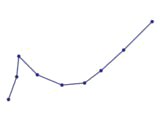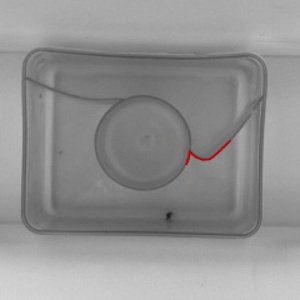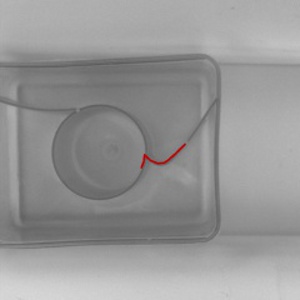You are here: Start » AVL.NET » AVL.DetectPaths(AvlNet.Image, AvlNet.Region, AvlNet.Path, float, float, AvlNet.Path[], float[], AvlNet.Image, AvlNet.Image)
AVL.DetectPaths(AvlNet.Image, AvlNet.Region, AvlNet.Path, float, float, AvlNet.Path[], float[], AvlNet.Image, AvlNet.Image)
Finds paths in an image.
| Namespace: | AvlNet |
|---|---|
| Assembly: | AVL.NET.dll |
Syntax
public static void DetectPaths( AvlNet.Image inImage, AvlNet.Region inRoi, AvlNet.Path inPath, float inMinScore, float inEdgeThreshold, out AvlNet.Path[] outPaths, out float[] outScores, out AvlNet.Image diagGradientMagnitudeImage, out AvlNet.Image diagScoreImage )
Parameters
- inImage
- Type: AvlNet.Image
Input image - inRoi
- Type: AvlNet.Region
Input region of interest, or null. - inPath
- Type: AvlNet.Path
Input path - inMinScore
- Type: System.Single
Minimum matching score - inEdgeThreshold
- Type: System.Single
Minimum accepted edge magnitude - outPaths
- Type: AvlNet.Path
Output paths - outScores
- Type: System.Single
Output scores - diagGradientMagnitudeImage
- Type: AvlNet.Image
Visualized gradients magnitude of an input image - diagScoreImage
- Type: AvlNet.Image
Calculated score for each pixel of an input image
Description
The operation detects paths in the inImage using the Generalized Hough Transform approach. The output array is ordered from best matching to worst matching results.
Examples
 A sample path (scaled for convenience). |
 |
 |
DetectPaths performed on the sample images with inMinScore = 0.7.
Remarks
DetectPaths is not scale- or rotation-invariant (slightly scaled or rotated paths are, however, detected properly).
Long inPaths cause long computation time.
Errors
| Error type | Description |
|---|---|
| DomainError | Degenerate path in DetectPaths. |


